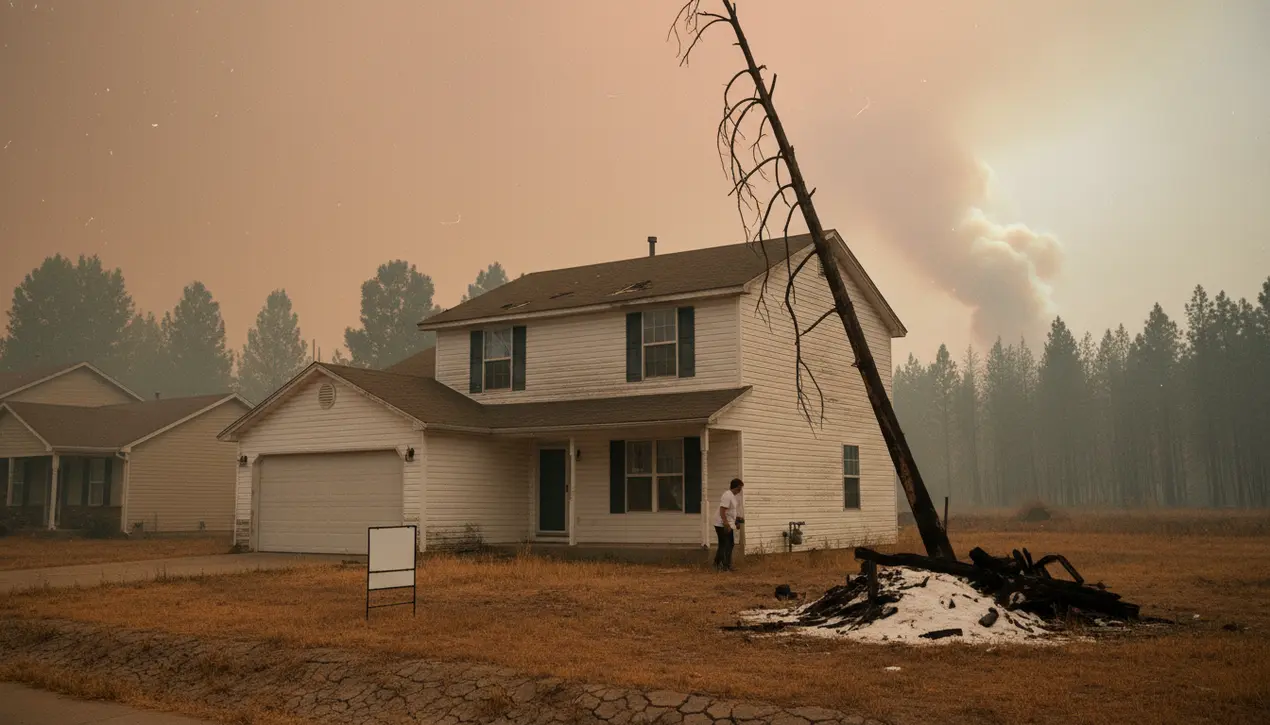
Otherreal estateHousing Market Trends
Home Insurance Crisis Reshapes the U.S. Housing Market
ET
Ethan Brown
2 hours ago7 min read
A seismic shift in home insurance costs is fundamentally altering the economics of American homeownership. Data from Cotality, a leading analytics firm, reveals that insurance now consumes a record 9% of the typical homeowner's monthly housing payment—a figure on a relentless upward trajectory.This represents a systemic shock to the real estate market, driven by three converging forces that are pushing the cost of shelter to unprecedented levels. The first driver is the sustained high cost of construction.Although the Pandemic Housing Boom's feverish pace has cooled, the historic spike in lumber, fixtures, and labor costs has permanently elevated property replacement values. These costs are now being factored into insurance premiums with a significant delay, creating prolonged financial pressure for homeowners.Compounding this is the escalating threat of climate change. Cotality's analysis shows that roughly 12% of the current U.S. housing stock, valued at $4.3 trillion, is located in high-risk zones for wildfires, severe storms, and flooding. Their projections indicate this share will surge to 20%, or $7.2 trillion, by 2050. Insurers are already pricing this future risk into today's policies.A third, critical factor exacerbates the situation: continued migration into these high-risk areas. John Rogers, Cotality's chief data and analytics officer, notes that one in six Americans now lives in a high-wildfire-risk zone, with fast-growing states like Florida and Georgia being particularly exposed.This concentration of assets in harm's way creates a feedback loop, leading to larger aggregate losses and higher premiums for everyone in the risk pool. However, Rogers also outlines a data-driven path toward resilience and affordability.He emphasizes that the problem isn't just where we build, but how we build. Following the 2018 Palisades fire, Cotality helped design a community rebuilding plan featuring fire-hardened homes and strategic defenses—a model that can cut wildfire risk by up to 75% and reduce insurance premiums by more than half.On an individual level, AI-powered assessments that analyze a home's roof material and defensible space are enabling insurers to offer premium discounts of 20% or more. For the average American, this insurance shock is a urgent lesson in personal finance.The era of treating home insurance as a minor, static cost is over. It has become a dynamic and significant variable in the affordability equation.Homebuyers must now weigh not only mortgage rates and property taxes, but also the cost of insurability and the potential need for resilience upgrades. This forces a redefinition of a sound real estate investment, moving beyond square footage and school districts to include a property's vulnerability to a changing climate and its capacity to withstand it. The housing market is undergoing a necessary but brutal repricing of risk, and the homeowners who adapt by investing in mitigation today will be the ones who secure their financial futures tomorrow.
#featured
#home insurance
#housing market
#climate risk
#construction costs
#insurance premiums
#real estate analytics
#risk mitigation
Stay Informed. Act Smarter.
Get weekly highlights, major headlines, and expert insights — then put your knowledge to work in our live prediction markets.
Related News
Comments
Loading comments...
© 2025 Outpoll Service LTD. All rights reserved.